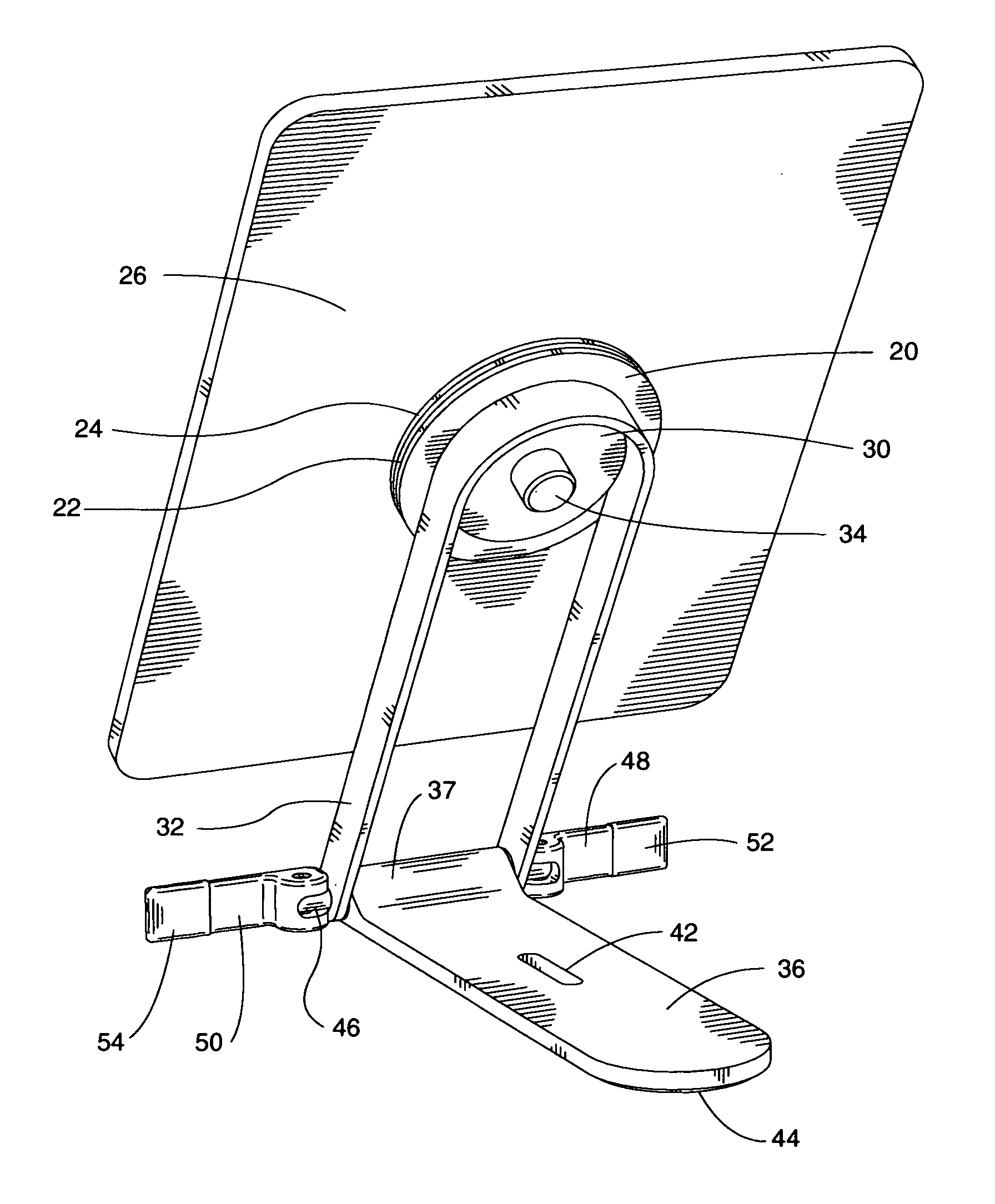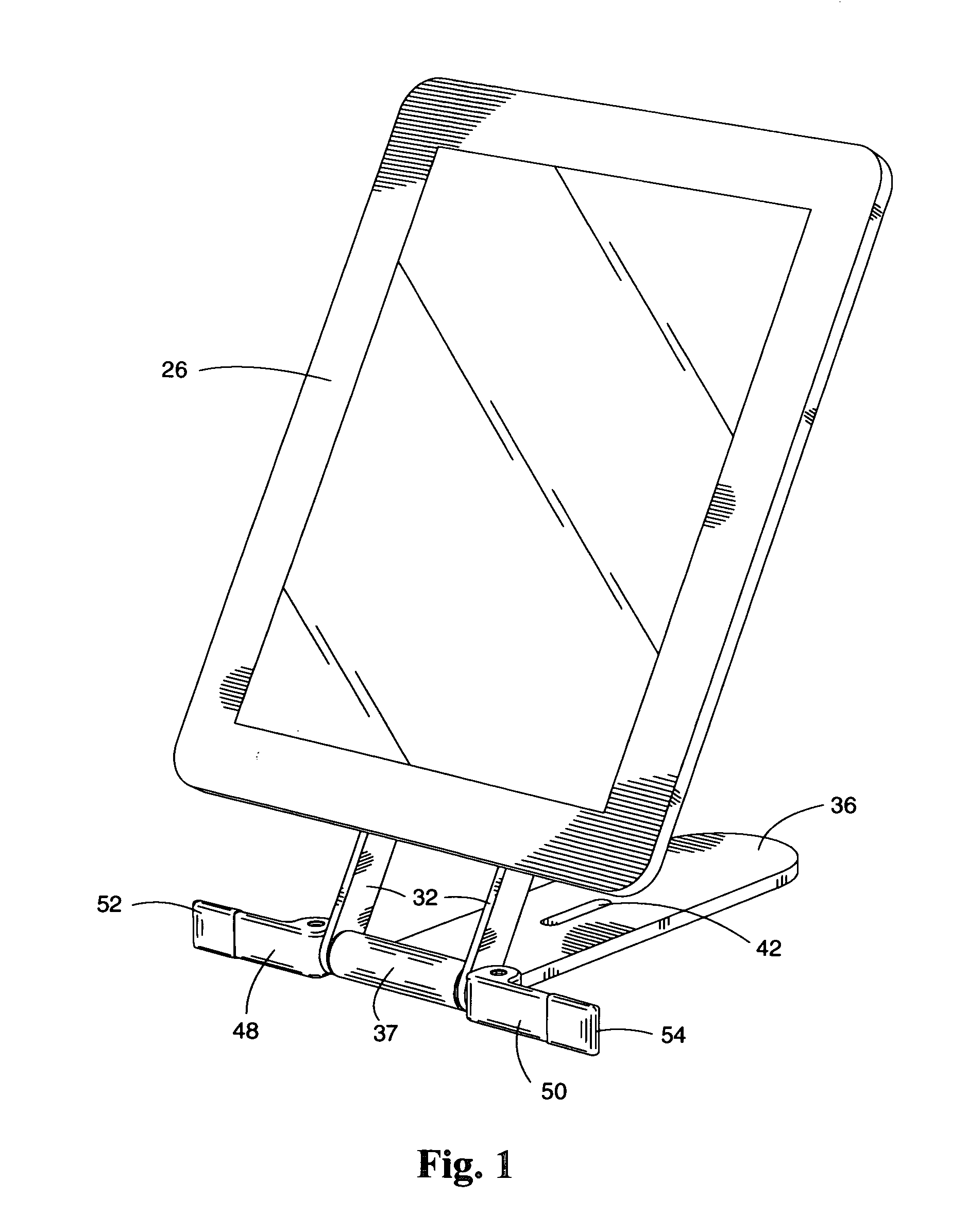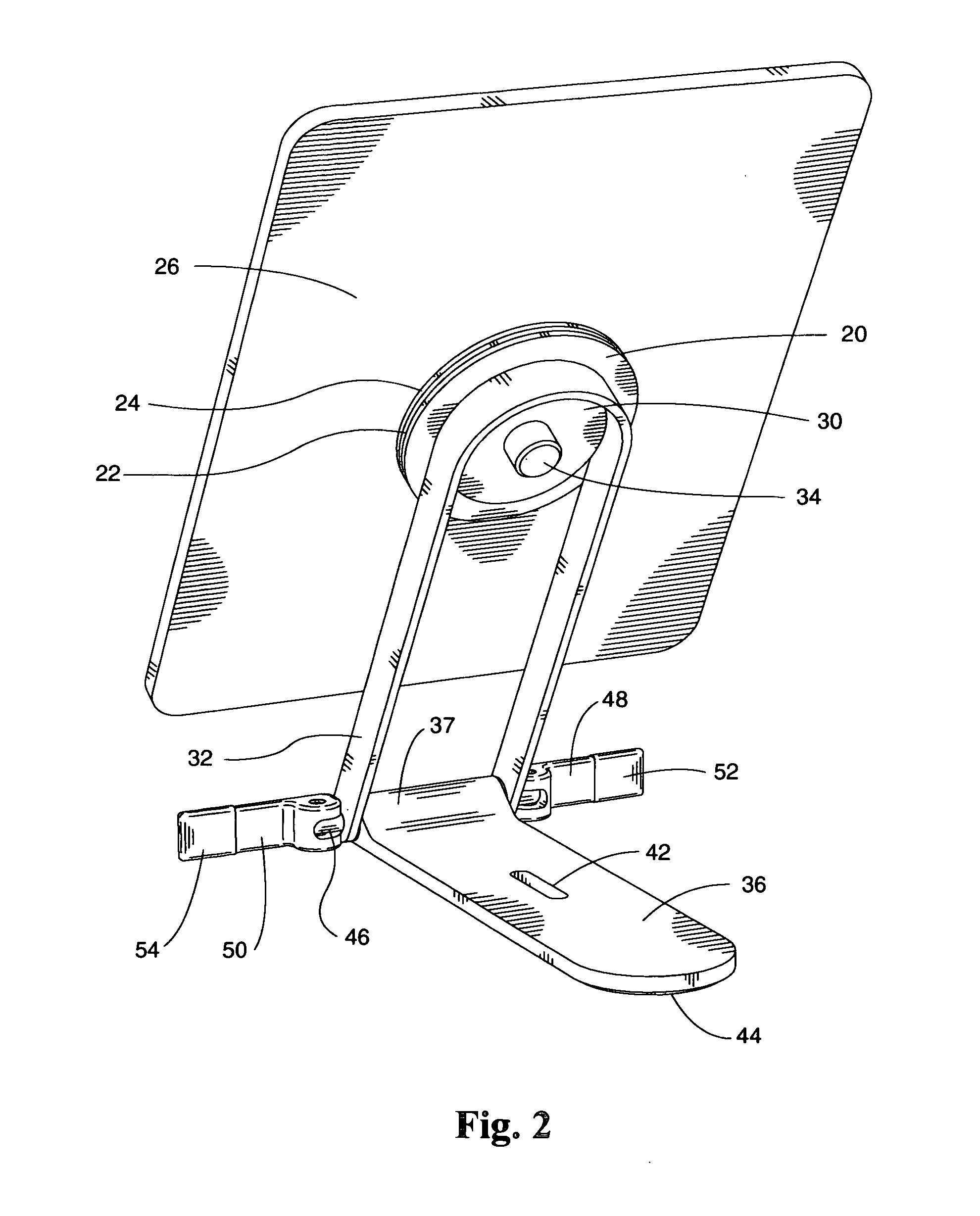Multi-positional stand and under cabinet mount for a tablet computer
a tablet computer and tabletop technology, applied in the direction of machine supports, electric apparatus casings/cabinets/drawers, instruments, etc., can solve the problems of not being portable, not allowing for screen rotation by touch, and not allowing the stand to be mounted to the bottom of a shelf or cabin
- Summary
- Abstract
- Description
- Claims
- Application Information
AI Technical Summary
Benefits of technology
Problems solved by technology
Method used
Image
Examples
Embodiment Construction
[0031]Referring to the drawings and initially to perspective FIGS. 1, 2, and 15, and to exploded FIGS. 16-18, a multi-positional stand and under cabinet mount for a tablet computer (of prior art) in accordance with the preferred embodiment of the present invention comprising a base member 36, a hinge member 32, a mounting plate 20, 2 cam-actuated handles 48 and 50, a hinge pin 46, 2 partially-threaded locking pins 56 and 58, and a base mount 60. Base member 36 can be solid and substantially flat and approximately 4 times as deep as it is wide. The sides of base member 36 are parallel near the front. The front area of base member 36 has a raised front area 37 that is cylindrical in shape and is oriented with its center axis going side to side. The raised front area 37 can flow smoothly into the flat shape of base member 36 and is oriented so that the bottom most point of thick area 37 and the bottom of base member 36 are on the same plane. Raised front area 37 of base member 36 has a...
PUM
 Login to View More
Login to View More Abstract
Description
Claims
Application Information
 Login to View More
Login to View More - R&D
- Intellectual Property
- Life Sciences
- Materials
- Tech Scout
- Unparalleled Data Quality
- Higher Quality Content
- 60% Fewer Hallucinations
Browse by: Latest US Patents, China's latest patents, Technical Efficacy Thesaurus, Application Domain, Technology Topic, Popular Technical Reports.
© 2025 PatSnap. All rights reserved.Legal|Privacy policy|Modern Slavery Act Transparency Statement|Sitemap|About US| Contact US: help@patsnap.com



